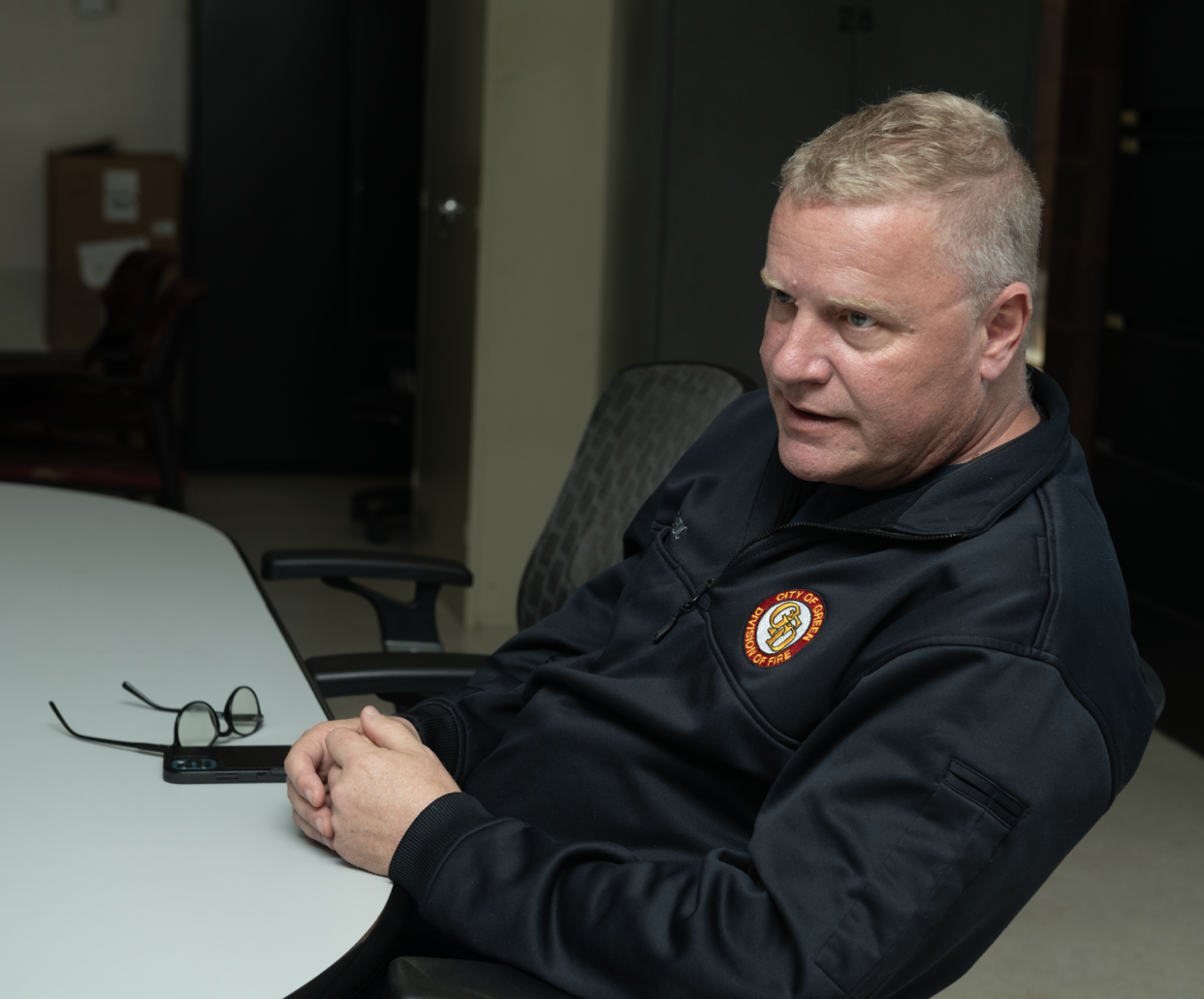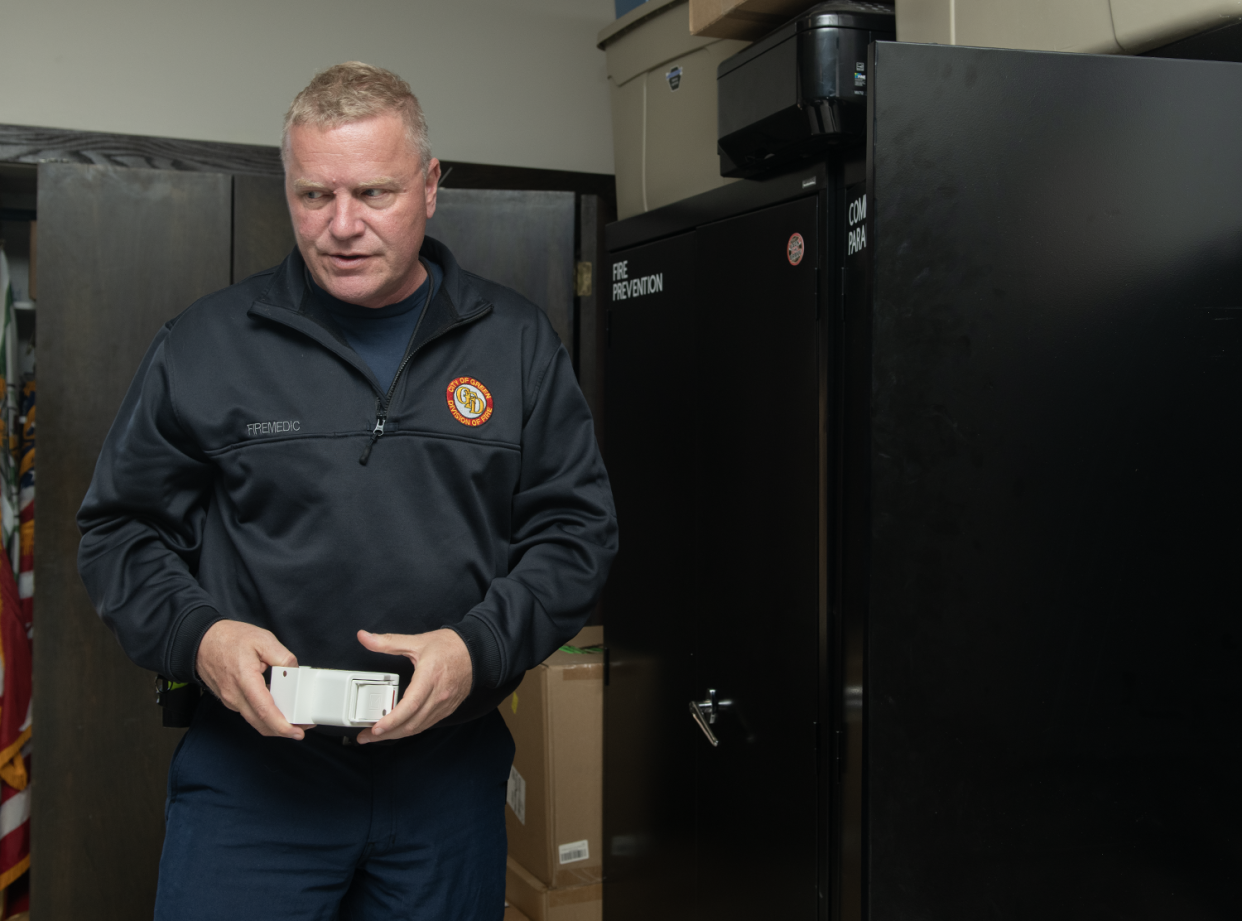Green outreach team goes door to door to battle fentanyl, substance abuse, overdoses

It’s Monday morning at Green Fire Station No. 1, and members of the city’s Outreach Quick Response Team are assembling.
Jean Jorgensen, a community paramedic in the Green Fire Department, is first to arrive. To prepare, he’s gone through police reports to find overdose victims the team will visit.
Today, April 15, there are two individuals the team will attempt to contact.
Jess Nesbitt, clinical coordinator for Oriana House, and Summit County Sheriff’s Office Sgt. Pete Nervo join the discussion about efforts to connect with individuals who have recently overdosed.
Knowing where to start on road to recovery from drug overdoses
Getting to people quickly after an overdose is important, they say, and the team changed to a twice-weekly schedule on April 4 to try to get to these people within 48 hours.
That’s the window when substance abusers are most likely to respond to the message the team brings: Help is available, and it can be accessed.
"In the best case, [we] schedule the person for assessment and treatment," Nesbitt says. "People do know it's available, but a lot of people don't know where to start."
Far more often than he’d like, Jorgensen said, the team is unable to make contact. The reasons can vary: The person might not be at home, or, if they are at home, they might not want to open the door or fear doing so.

Suspecting his uniform may intimidate some people, Nervo is wearing street clothes for today’s visit as a test to see if more people become receptive to contact.
People look through the peep hole "and see me and they don't answer the door," he says.
Green not immune to substance abuse, overdose deaths
While the spotlight on the substance abuse crisis in Summit County and throughout the nation has subsided, the problem has continued and evolved. Fentanyl still dominates as the No. 1 overdose killer in the county, but it's now often mixed with other drugs like Adderall or meth or xylazine, an animal sedative that can cause necrosis — the rotting of skin — in humans.
A Summit County Public Health database that tracks drug overdoses by ZIP code shows that the Green area hasn't escaped the substance abuse crisis.
From 2016 through March 31 of this year, the 44685 ZIP code, the most populous of six that run through Green, logged the ninth-highest per capita overdose rate in Summit County. Since 2016, 368 overdoses have been recorded, and those are only the ones the agency is aware of.
The 44314 ZIP code that encompasses Akron's Kenmore neighborhood had the highest per-capital overdose rate in the county during that time period.
Although the overdoses have moderated since peaking in 2016, they continue at significant levels, as do overdose deaths. Last year in Green, nine people died from an overdose.
Countywide, overdose deaths have remained above 200 per year after falling to 144 in 2018.
According to ADM Board Statistics, Summit County overdose deaths per year since 2016 were:
2016: 325
2017: 257
2018: 144
2019: 216
2020: 219
2021: 235
2022: 247
2023: 228
Ohio's Summit County distributed 6,934 boxes of naloxone in 2022
The death count would be higher in the county if not for the use of naloxone, a medication that can reverse an overdose from opioids, said Megan Scott, public health coordinator with Summit County Public Health. The naloxone distribution programs throughout the county were introduced after the opioid crisis peaked in 2016 and have expanded since.
Scott said it's difficult or impossible to determine the exact amount of lives saved, but it's clear it has helped keep numerous overdoses from becoming fatalities.
Through interviews with individuals who have received naloxone, the agency is able to form a picture of the scene on the streets.
"Just through asking those questions, we had over 700 people saved in 2023," Scott said. "That's anecdotal, [but] if that's what we're hearing, we have to assume there's more out there."
In its 2022 annual report, the health agency said it distributed 6,934 boxes of naloxone, making them available through the mail, and working with businesses to install the medicine in high overdose areas.
'We know that a lot of times we are just actually planting the seed'
Kim Patton, associate director of clinical services for the Summit County Department of Alcohol, Drug Addiction and Mental Health (ADM Board), said in a recent interview that the quick response teams were first used in 2017 to attack the surge in overdoses in the county and continue today in many cities.
"We do have multiple teams in Summit County that go out," she said.
Cuyahoga Falls, Green, Coventry Township, Akron, Stow and Barberton all have a QRT programs, she said.
By the numbers: Where people are overdosing and dying in Summit County? 7 ZIP codes
Opioid crisis: Fentanyl devastating Akron's Black community
ADM estimates about 30% of those contacted do take some action to receive help for their addiction.
"We know that a lot of times we are just actually planting the seed," she said.
'Getting people on the path to recovery'
In Green and elsewhere, the teams will sometimes go out multiple times before making contact.
The team can sometimes leave naloxone or fentanyl test strips, Jorgensen said. It's also ready to help individuals struggling with an alcohol addiction get the help they need.
The city's effort to reduce overdoses and substance abuse extends beyond the QRT visits, said Mayor Rocco Yeargin.
On April 28, the Green Drug Task Force will host an event with local churches to focus on the substance abuse issue, along with mental health.
Ten churches are participating in the event. The churches will share resources about mental wellness and how to get help for substance abuse and mental health issues.
"I think the key is getting people on the path to recovery," Yeargin said.
The Green team has paid visits to more than 150 people, but Jorgensen says that measuring the effectiveness of the quick-response visits isn’t easy.
“It’s difficult to track…” he said. “We don’t have that [information] because of privacy laws. It’s a little bit frustrating.”
Leave a message for Alan Ashworth at 330-996-3859 or email him at aashworth@gannett.com. Follow him on Twitter at @newsalanbeaconj or Facebook at www.facebook.com/alan.newsman.
This article originally appeared on Akron Beacon Journal: How a quick response team in Green, Ohio saves lives after overdoses
